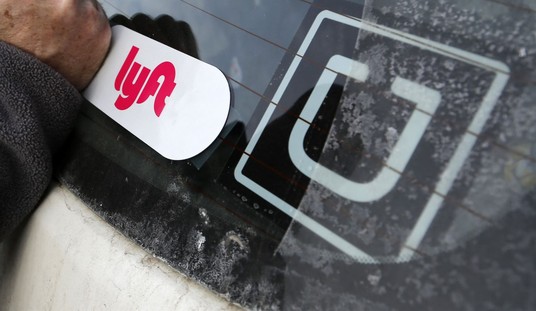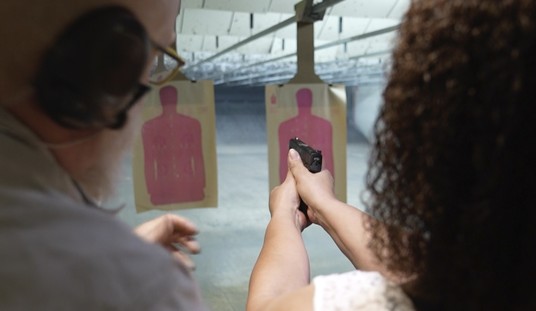The Senate Judiciary Committee held a big hearing on Tuesday, with committee chair Dick Durbin and his fellow Democrats promoting the idea that we’re in the middle of an “epidemic” of gun violence that needs to be treated as a public health issue. But what does that mean, exactly? Are we talking about using non-law enforcement means to address the “superspreaders” of violence; the small cohort of (mostly) young men who are responsible for a disproportionate amount of violent crime in the country, or are we talking about a mission to eradicate guns like the campaigns to eradicate polio or measles?
It depends on who you ask. There were plenty of witnesses who testified at the request of Democratic senators who didn’t spend their time at the microphone promoting things like a gun ban, magazine restrictions, waiting periods, or red flag laws; instead speaking about interrupting the cycle of conflict that drives so much of the violence in our communities.
“It became painfully clear that this young child was exceptionally high risk for reinjury after being discharged,” said Dr. Franklin Cosey-Gay, Director of the Violence Recovery Program in Chicago.
During this congressional hearing, Dr. Cosey-Gay shared a story about a 12-year-old patient that he’s treated in the past. He said his program is a hospital-based initiative working with survivors of gun violence in Chicago.
Cosey-Gay said they’re treating gun violence as a public health concern. This includes working with medical specialists and social workers and even collaborating with violence intervention teams.
“Many of them have been involved with causing the harm… [and] they have had an opportunity to redirect their lives with support so now them being credible with how to engage and create non-aggression agreement,” he said.
Honestly, this seems like a much more targeted and constitutionally sound approach to addressing violence than telling concealed carry holders they can’t carry anywhere or demanding folks take a live-fire training class at a range before they can apply for a government-issued permission slip to keep a gun in their home. There’s nothing inherently anti-Second Amendment about what Cosey-Gray is doing in Chicago, and if efforts like his were the totality of the public health approach to “gun violence” I doubt you’d find many gun owners opposed.
But as another witness reminded us, a public health approach is not just about interrupting violence, and it has almost nothing to do with ensuring consequences when violence does take place. The exchange between Sen. John Kennedy (R-LA) and Yale School of Public Health Dean Megan L. Ranney is being shared on the left as some sort of “gotcha” moment for Kennedy, but to me, it’s a perfect example of the slipperiness of the public health argument.
“May I ask you this?” Kennedy began, addressing Dr. Megan L. Ranney, the dean of Yale’s School of Public Health.
“Why do you think that Chicago has become America’s largest outdoor shooting range? You think it’s because of Chicago citizens? Who have no criminal record, but but who have lawfully a gun in their home for protection. Or perhaps for hunting. Or do you think it’s because of a finite group of criminals who have rap sheets as long as King Kong’s arm?” Kennedy asked, echoing common GOP talking points.
“So, Mississippi, Louisiana, and Missouri actually have higher firearm death rates,” Ranney replied.
“What about Chicago?” Kennedy shot back.
“Sir I don’t live in Chicago. It’s not my primary area of research,” Ranney said in response.
“You don’t have an opinion on that?” Kennedy followed up.
“I think there’s easy access to firearms compared with combined with environmental conditions. Lack of great education. There are actually been studies showing that when you green vacant lots and repair abandoned buildings in urban neighborhoods, you see decreases in gunshots, in violence as well as in stress and depression in the neighborhoods around them,” Ranney replied.
“No disrespect, doc, but that sounds a lot like word salad to me,” Kennedy replied.
First, note that while Kennedy was talking about the city of Chicago and its violent crime, Ranney countered by pointing out that the “firearm death rate” in three states is higher (before suddenly declaring herself too ignorant to speak about Chicago, by the way). The firearm death rate includes homicides, suicides, and accidental/negligent deaths; all of which are very different problems that require different approaches. Label them all “gun violence”, however, and all of a sudden a single solution is not only possible, but almost mandated.
It’s also not a good idea to compare a city’s violent crime rate to an entire state’s. If we want to play those games, then let’s talk about the gun homicide rate in Washington, D.C, which is higher than the total firearms death rate in states like Mississippi. Ranney’s response may have sounded good in a soundbite, but from an academic approach (which is why she was invited to testify in the first place) it’s utterly meaningless.
When Ranney was pressed about why Chicago has a high rate of violent crime, her first response was the “easy access to firearms.” Now, I realize that Ranney is no expert on Chicago, so maybe this will come as a surprise, but Chicago and Illinois have very restrictive gun laws. Handguns were banned in the city from the early 1980s until 2010, and even now the city isn’t home to a single gun store or firearms range, though tens of thousands of Cook County residents have ventured beyond the city limits to get the training required for an Illinois concealed carry license. That’s another improvement that came about as the result of a court decision rather than legislative action, though in that case it was the Seventh Circuit Court of Appeals that determined the state’s complete ban on carrying violated the Second Amendment; a decision the Democratic power structure decided not to appeal to the Supreme Court at the urging of gun control groups concerned that the Court might establish a nationwide precedent for bearing arms in self-defense.
The gun controllers delayed that decision, and it took almost a decade for the Supreme Court to get ahold of another right-to-carry case, but it’s now firmly established that we have the right to both keep and bear arms. Given that, and given that even tight gun controls like those in Illinois or California don’t prevent bad actors from obtaining guns both legally and illegally, what exactly does Ranney believe can and should be done to make it harder to access firearms?
More importantly, how do you do that without enacting the very same gun control laws that have been proposed outside of a public health framework? The simple answer is you can’t. There may be components of a public health approach to “gun violence” that don’t involve preventing people from exercising a constitutional right, but as long as “access to guns” is part of the equation then gun control laws will be as well.
That’s the real problem with what Durbin and his fellow Democrats were demanding on Tuesday. We can all agree that violent crime (including gun-involved crime) is a problem, but we’re not going to agree on the solution if it involves treating violence as the symptom and gun ownership the underlying disease.









Join the conversation as a VIP Member